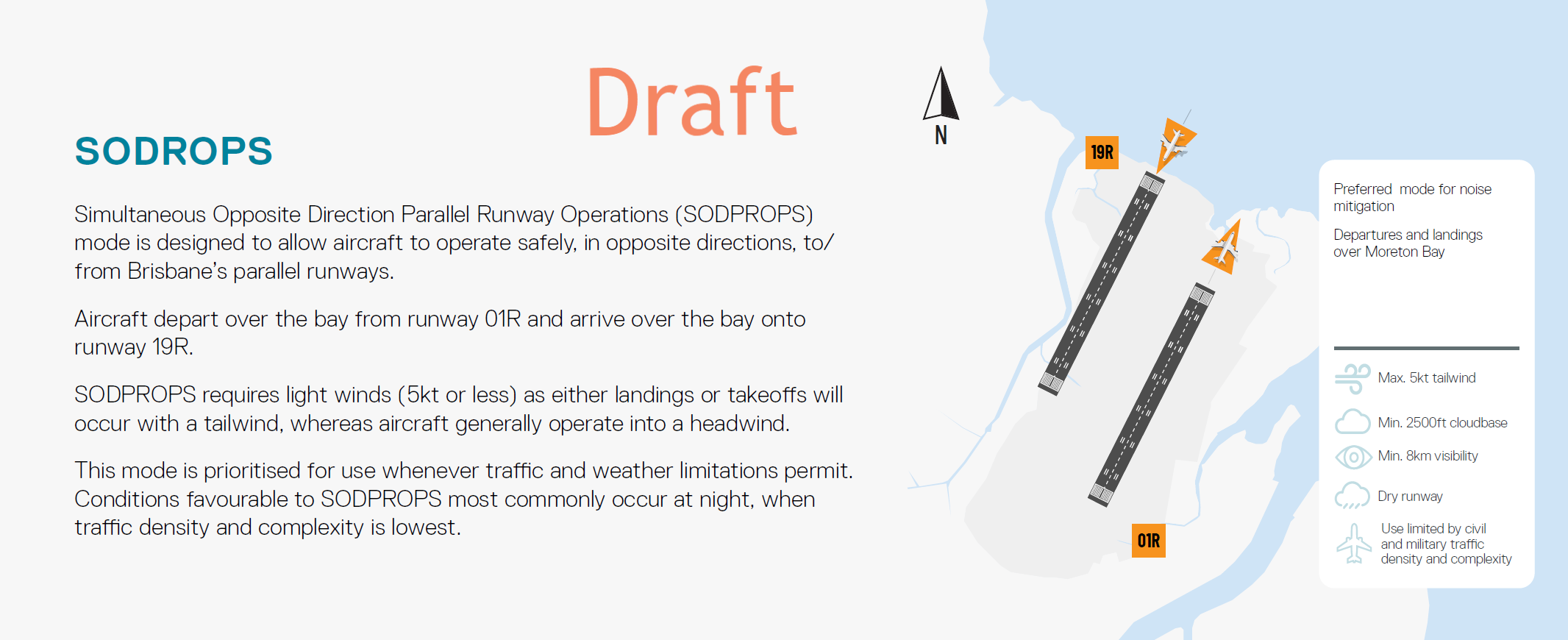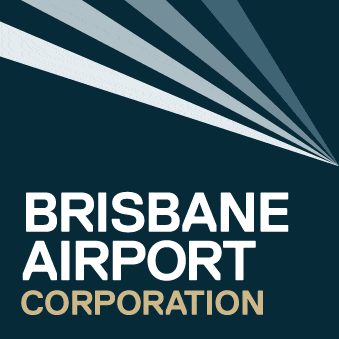Learn about the different runway operational modes at Brisbane Airport and view operational reports on runway operation usage and forecasts.
Current runway operating mode:

We have developed a series of dashboards using data from ADSB Exchange and our independent noise monitoring technology (Casper Noise), Airservices Australia, Bureau of Meterology and WeatherZone. This includes historical reporting on overnight operations and runway directional usage, on-time performance as well as forecasted directional use. Information can be filtered on the reports, with historical data available for comparison from 2017 onwards.
Overnight (10pm-6am)
NEEDS TO BE DEVELOPED / UPDATED: The direction in which aircraft are able to take-off and land is determined by the wind speed and direction at the airport. As a general rule, aircraft must take-off and land into the wind.
The preferred mode of operation overnight (10pm-6am) is for all aircraft to arrive and depart over the bay, to minimise the impact of noise on the Brisbane community. However this is weather dependant and based on four factors; wind speed, visibility, cloud cover and runway surface conditions.
This chart shows the historical data for over the bay operations and the direction of flights on the runways at Brisbane Airport.
- North (northerly/easterly winds) = where flights land over the city and take-off over the bay.
- South (southerly/westerly winds) = where flights land over the bay and take-off over the city.
Data source: Anoms and Casper
Tomorrow's Forecast
NEEDS TO BE DEVELOPED / UPDATED: The mode of operation of the runway system is determined by the wind speed and direction at the airport. This chart provides planned modes of operation based on the weather forecast at Brisbane Airport for the next 54 hours. This forecast does not take into consideration the traffic and complexity at a given time that Air traffic Control must manage which is a significant contributor to which mode is used. Additionally, there may be some discrepancy between the BOM forecast data and actual weather data measured on the airport at the time of mode selection. The weather data collated by Air Traffic Control Anenometers and aerodrome conditions comes from Aeronautical Terminal Information Service (ATIS).
Note: data is updated daily at midday for the next 54 hours. Source: Bureau of Meteorology Aviation Weather Service and Weatherzone.
On-time Performance
On-time performance (OTP) measures the percentage of flights that are considered ‘on-time’, which is arriving or departing within 15 minutes of the scheduled time. This is an industry standard used by both airlines and airports to benchmark and improve on operating performance.
Whilst delays such as bad weather on the flight paths into Brisbane, or even at a connecting destination, like Sydney or Melbourne can have on onflow impact right across the domestic network, in Brisbane, parallel runway operations are critical to reducing operational delays into the future.
Note: data is updated monthly for the previous month. Source: Airservices Australia



